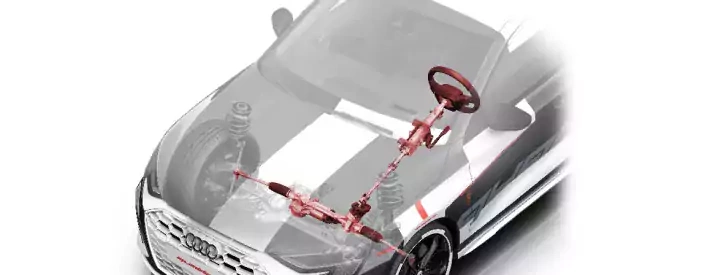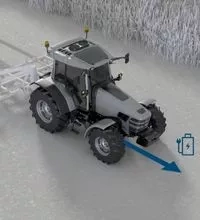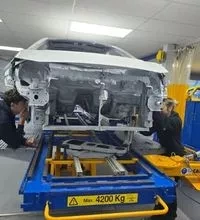Back to basics: Suspension and steering – Part Three

In this article: In the final part in the series, we take you back to basics with suspension and steering technologies, taking an in-depth look five steering technologies
The steering wheel is the drivers link to the vehicle and the road, and the steering system it’s connected to translates the rotary motion of the steering wheel to move the front wheels around the steering pivot axis. Usually the steering system selected relates to the type of suspension arrangement. In addition, even the type and power assistance depends on the front axle weight, the size of the tyres, the type of manoeuvre required and the power source.
Worm and sector
Used mainly by larger panel vans, LTi taxi cabs, trucks and buses as well as off-road vehicles with solid front axles. The Ackermann steering linkage is located between the front wheels, but a second lever off one hub is attached to an arm which is worked by the steering box.
It’s easily packaged on just one chassis leg, but the extended linkage can give quite a lot of play in the system, and the geometry to prevent bump steer (direct feedback of large road undulations back through the steering) is very difficult. For this reason, the system tends to be used with full power assistance, where the engine power hydraulics move the steered wheels at the command of the steering wheel.
Rack and pinion
The rack has one set of teeth and the pinion is driven by a column from the steering wheel.
It’s main advantage is the direct actuation of each hub from each end of the rack giving greater precision, but it’s difficult to package in or around engines, and challenging to get the steering column drive to it.
Hydraulic power assisted steering
In this setup a pump draws fluid from a reservoir and delivers it via a high pressure line to the rack assistance valve body. The valve inside it delivers assistance depending on how the steering wheel moves the rack position. The hot fluid normally passes through a cooler and then back to the reservoir. In this system electronic control reduces assistance when the vehicle reaches a certain speed.
Hydraulic power assisted steering provides excellent feedback and if properly developed, unobtrusive assistance, but has the same limitations as a steering rack with the addition of all the hydraulic pipes, the pump and cooler. In addition, the system takes around 1kW when not working, and up to 5kW when giving maximum assistance.
Electrohydraulic power assisted steering
As an answer to the constant power required for an engine driven hydraulic system, even when it was not providing any sort of assistance, the on-demand electro-hydraulic system provided power to cope with larger tyres and heavier axle weights, than the first generation electric assistance systems.
It’s main advantage is that it’s supplied pre-assembled and complete with PAS fluid. The on demand electric motor saves energy because it only works when the assistance is demanded – unlike an engine driven PAS system. In addition, there is no need for a PAS oil cooler since the system does’nt work continuously. The electronic control allows some degree of vehicle self-steer when integrated into the ESC and other safety systems.
Electric power assisted steering
With the advent of the column mounted systems introduced by Delphi and TRW, cars such as the Renault Megane had the motor pack close to the steering wheel. The column assembly weight however was frequently greater than 20kg, which required a bigger instrument panel carrier beam and issues around airbag calibration. Modern systems package the motor drive by the rack to deliver the best possible assistance, but that too has not been without issues due to heat from the engine just above the rack.
The system doesn’t need PAS fluid, it’s on demand only, and initial packaging problems have been largely solved. Being fully electronically controlled, the rack can now be fully integrated into the ESC as well as other active safety systems to allow limited vehicle self-steer.




